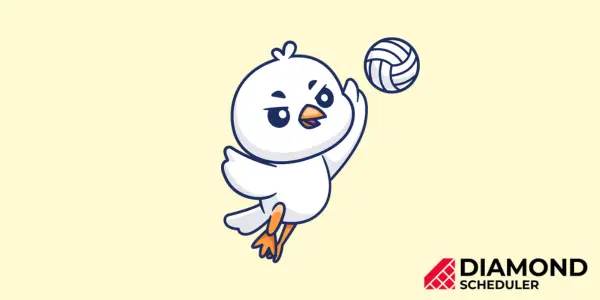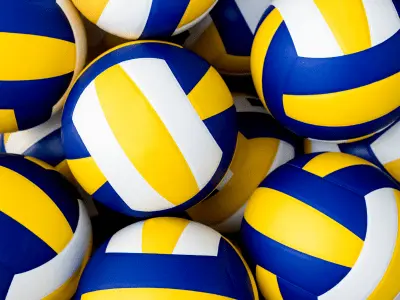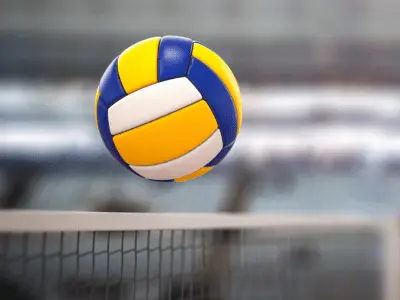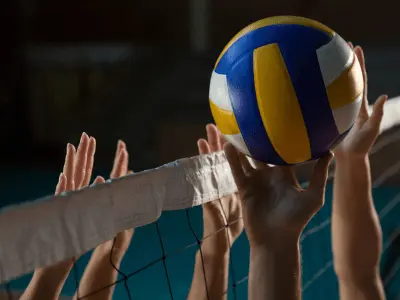
Volleyball Nations League Format, Rules, and Regulations
Volleyball has become one of the most popular sports activities, surpassing major sports with the likes of basketball and baseball.
With an estimated 900+ million fans, the sport is already immensely popular in countries like Brazil and China. In the United States, volleyball has seen an increase in youth participation and an uptick in fan viewership.
Since ESPN2 started airing the NCAA Women's Volleyball tournament, it has been the highest-rated event on the channel within the month it aired.
The Volleyball Nations League (VNL) is one of the most prestigious volleyball competitions in the world second only to the Olympic Games.
The governing body of the tournament, which also oversees the national teams that compete in the tournament, is the Fédération Internationale de Volleyball, a massive organization with plans to continue to grow the sport globally and develop leagues and federations around the world.
Though the Volleyball Nations League is essentially in its infancy (created in 2017), there's no doubt the league has a large untapped commercial potential.
In this guide, we'll take an in-depth look at the VNL, its rules, and format, and explore some of the opportunities there are to join in on the exciting growth around the league.
What is the format of the Volleyball Nations League?

The Volleyball Nations League has a format that expands across the men’s and women’s leagues
After it replaced World League and World Grand Prix in 2018, the VNL brought a new look to modern professional volleyball tournaments.
As of 2022, the tournament consists of the following format and is used across both the men's and women's leagues.
1. Pool phase
In the Volleyball Nations League pool play, 16 teams are split into two pools that consist of 8 teams.
The pool phase spans across a 3-week period with each team playing 12 matches within their respective pools. Teams compete in a round-robin tournament format.
2. The finals
The final round is a knockout elimination competition where the 8 top-ranked teams from the pool phase compete in four quarter-finals, two semifinals, and a 3rd place and championship match.
Who are the VNL teams and players?
Team rosters must consist of 25 players and the tournament hosts 16 teams from around the world.
19 teams have appeared in the Volleyball Nations League in the men's tournament and 18 in the women's tournament.
Men's Teams:
Argentina
Australia
Brazil
Bulgaria
Canada
China
France
Germany
Iran
Italy
Japan
Netherlands
Poland
Portugal
Russia
Serbia
Slovenia
South Korea
United States
Women's Teams:
Argentina
Belgium
Brazil
Bulgaria
Canada
China
Dominican Republic
Germany
Italy
Japan
Netherlands
Poland
Russia
Serbia
South Korea
Thailand
Turkey
United States
Who are the top VNL players to watch?
Every year the VNL sees new rising stars showcase their skills as well as established veterans of the game display their dominance.
The VNL brings out some of the most impressive athleticism and skill sets.
Below is a list of five men and women to look out for in the coming years.
Women:
Paolo Egonu
Caterina Bosetti
Monica De Gennaro
Gabriela Guimaraes
Alessia Orro
Watch the video below to see some of these players in action:
VNL 2022 Dream Team | Best Action | Top 7 Players (HD)Men:
Earvin N'Gapeth
David Smith
Mateusz Bieniek
Micah Christenson
Jean Patry
Check out the video below for a look at how some of these players are changing the game:
DREAM TEAM | Volleyball Men's Nations League 2022 | Top 7 Players | HD |What are the key VNL rules and regulations?
At first glance, the rules and regulations of volleyball may seem quite simple.
However, the game is actually quite detailed in its structure with over 80 pages in the FIVB Official Volleyball Rulebook.
Below are some of the key rules to familiarize yourself with:
There are only 6 players on the volleyball court at once (3 in the front row and 3 in the back row).
Every serve results in a point for the winners of the rally.
Players are not permitted to hit the ball twice in a row (a block is not counted as a hit).
During a volley and a serve, the ball can be played off the volleyball net.
A ball that hits the boundary line is considered in.
If a ball strikes an antenna, the floor fully beyond the court, the net or cables beyond the antennae, the referee stand or pole, or the ceiling outside an area that's non-playable, it is considered out.
Any portion of a player's body may make contact with the ball.
It is prohibited to catch, throw, or hold the ball.
Players can not hinder or attack a serve from the 10-foot line or inside it.
Following the serve, front-line players may change places at the net.
The number of sets in a match depends on the quality of play.
What is the Challenger Cup?

The Challenger Cup features 7 teams not in the current season and the last-placed challenger team.
The Challenger Cup is how promotion and relegation are determined for teams that will compete in the following year's Volleyball Nations League.
The tournament runs concurrent with the VNL finals and features 7 teams not in the current VNL season and the last-placed challenger team from the VNL.
The teams compete in a knockout phase, and the winner moves into the following year's VNL matches.
What are the VNL scoring system and substitutions?
In order to understand the VNL and how games are played, you should have a good grasp of the scoring system and substitutions.
Matches consist of a best-of-five set format. Each set is played to 25 points.
Matches are only able to be won by 2 points which eliminates the possibility of a tied match.
How can you watch the Volleyball Nations League?
If you live in a country that’s participating in the VNL, then you’re in luck, because various local networks will broadcast the tournament matches.
If you’re outside of the broadcasting countries, you can still watch the VNL through the FIVB app.
By going to volleyballworld.tv/signup and for just $20 dollars, you can get full access to all games in the tournament.
Advancements in volleyball and the future outlook for the VNL

The future looks bright for the VNL.
While revenue numbers are not publicly available for the VNL, the FIVB continues to grow at a rapid rate.
In 2021, the FIVB benefited from a significant investment of $100 million from CVC Capital Partners, which sparked a $300 million commercial initiative that launched Volleyball World, the new commercial hub for all things volleyball.
The partnership concentrates on event hosting, fan experience, media, data/digital prospects, and sponsorship to increase commercial earnings for reinvestment, ensuring the sport's long-term success.
The future also looks bright for the VNL, itself.
The International Volleyball Federation (FIVB), which supervises the competition, has expressed a desire to expand it in the future, possibly including additional teams or locations to the schedule.
The FIVB has also declared a desire to look into new technology and innovations in order to improve the fan experience and promote the sport globally.
Frequently asked questions
Who are the best VNL players?
The best VNL players include the following:
Paolo Egonu
Caterina Bosetti
Monica De Gennaro
Gabriela Guimaraes
Alessia Orro
Earvin N'Gapeth
David Smith
Mateusz Bieniek
Micah Christenson
Jean Patry
Where will VNL 2024 take place?
VNL 2024 will take place in Turkey, Brazil, China, Texas, Hong Kong, and Japan.
Who won the 2023 VNL?
Poland's men's team beat USA in 4 sets, while Turkey's women's team claimed their first VNL title after beating China in 4 sets.
Conclusion
The VNL was first presented in 2018, and it has since grown to become one of the world's most prominent volleyball events.
Each year, a different team has won the event, and new and intriguing athletes continue to emerge in the ever-growing sport.
As one of the largest sports in the world, volleyball poses a massive opportunity for league owners, entrepreneurs, and fans of the game.
When creating those complex round-robin schedules that are used in the VNL and many other associations, scheduling software that provides efficiency, flexibility, and communication is essential.
Diamond Scheduler does just that and makes the process quick and straightforward so that you can focus your valuable time on the exciting and growing world of volleyball!
Jeff Tipper is an avid sports fan who has a strong passion for basketball. A graduate of the University of New Mexico with a Bachelor's Degree in Operations Management, Jeff has experience in operations and claim processing and spends his free time writing articles and blogs focused on sports and various business topics.
About Diamond Scheduler
Diamond Scheduler makes planning your league’s complex season easier than ever. Create your first schedule in minutes for free. It's fast, fun, and simple.



